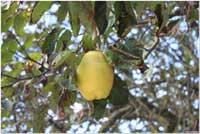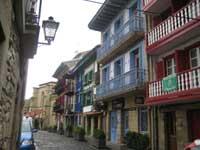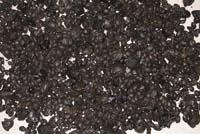Clarifying the life habits of the medieval population
2011/02/26 Lakar Iraizoz, Oihane - Elhuyar Zientzia
Valleys, cherries, plums, peaches, grapes, apples, figs, olives, pumpkin, hazelnuts, acorns, nuts, chestnuts, pine nuts, beech acorns, wheat, barley, oats, melon or cucumber, and, especially, micpiras and quince. Seeds and remains of all these fruits have been found on Panpinot Street in Hondarribia and on the Olazabal plot. XIV. and XVI. They are all centuries old.
"We have obtained very good results in the excavations, they have allowed us to know the medieval food and know the habits of life of our ancestors," explains Pia Alkain, of Arkeolan. They have given great importance to the discovery of remains of quince and medlar, "since until now these species were not registered in the archaeological record of the Iberian peninsula", says Alkain.

In fact, it is not easy for the remains of fruits and, in general, the remains containing organic matter to remain four hundred years. "They usually do not appear in archaeological sites as they rot. They have to be in very special conditions, without oxygen and full of water, in an anaerobic environment," said Alkain. And in those conditions the remains of Hondarribia were found. Panpinot Street was a landfill and the Olazabal plot a well. Over time we have found them slightly blackened, but in general all the seeds that were in good condition, added Alkain.
As important as finding clues is the conservation of the found findings and not begin to deteriorate and rot them now. Archaeologists take great care of this issue. First, and until the end of the study phase, "we have stored in closed bags full of heat and water, refrigerators at low temperatures," explains Alkain. Then, once extracted, the seeds are subjected to a conservation process. In this process they are first freeze-dried, that is, the water is removed and then the synthetic resin is inserted into the seeds so that it occupies the place of the water. "This keeps the seeds out of the water and at warmer temperatures," explains Alkain. With the current seeds they will also do it gradually.
Although the excavations have been carried out by Arkeolan, it has not taken over the entire study. In Madrid they have been accompanied by experts from the Higher Council of Scientific Research (CSIC). Among other things, they have needed help in determining which species are the seeds collected. Alkain explains this: "Anyone can know simple seeds like peach and valley seeds or nuts. They are saturated with water and black because they have remained in the subsoil for 400 years, but they have the same appearance. They have been sent to the CSIC to identify those we do not know." There they are archaeobotanists and are specialized in identifying archaeological remains of plants. They have reference collections that compare the samples they collect.
Steps to know the customs of a dark age

They have been able to see the result obtained and the data obtained, for example, XIV-XVI. For centuries its inhabitants exploited the garden, collected food from the forest (most nuts were in the forest) and dedicated themselves to agriculture. That is, we have known what kind of food they had and how they took advantage of the environment. That's a lot of information," said Alkain.
The Middle Ages is a very dark time, "there is no archival data," says Alkain. If there are Roman data, seed research has also been done, etc. But then there is a gap. "We know that in the Middle Ages there were many people, because at that time many cities were created, and people left somewhere! said Alkain. In Gipuzkoa, for example, 25 cities were created for two centuries, Hondarribia itself is 1203.
Arkeolan's goal is to cover this temporary vacuum and is expected to be done gradually. According to Alkain, "we want to link the investigations of the Roman era with those of the Middle Ages to achieve a continuous record. We are writing an old book that is not written in any file."
To do this, they need more excavations to find more pieces of the puzzle that they want to complete. And in order to make excavations in a certain urban core, they usually have to wait for a reform project to come out of some house or building. It is necessary to carry out an archaeological study prior to the execution of a work in protected urban areas. Therefore, they don't know when they can continue to fill in the history pages they haven't filled in. However, "As it is protected, there it will remain," says Alkain, "and behind us will come others, with better technology, and they will continue with that work."
Published in Ortzadar

Gai honi buruzko eduki gehiago
Elhuyarrek garatutako teknologia




